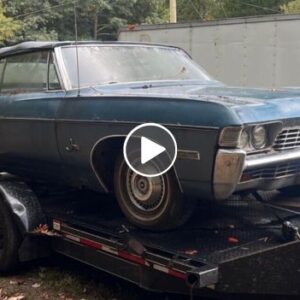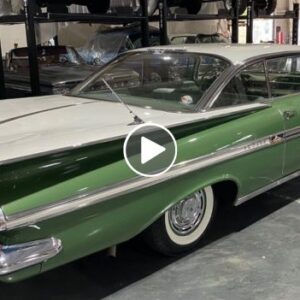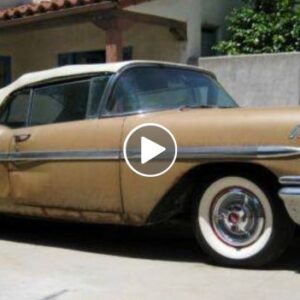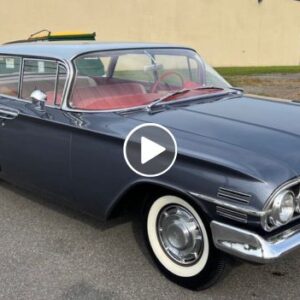The 1972 Dodge Charger stands as an iconic representation of the classic American muscle car era. With its aggressive styling, powerful engine options, and enduring legacy, this vintage vehicle continues to captivate car enthusiasts around the world. In this article, we will delve into the history, design, and performance of the 1972 Dodge Charger, as well as its impact on the automotive industry and its lasting appeal among collectors.
A Brief History of the Dodge Charger
The Dodge Charger’s story began in the mid-1960s, as the American automotive industry experienced a boom in the popularity of high-performance vehicles. Muscle cars, characterized by their powerful engines and sporty designs, quickly gained favor among young and passionate car enthusiasts.
The first generation of the Dodge Charger debuted in 1966, featuring a fastback design, a potent V8 engine, and an innovative interior layout. Over the years, the Charger underwent several changes, both in design and performance, eventually leading to the introduction of the third-generation model in 1971.
The Third-Generation Dodge Charger (1971-1974)
The 1972 Charger was part of the third generation of Dodge Chargers, which spanned from 1971 to 1974. This generation marked a significant departure from the previous models, as the Charger took on a more rounded and curvaceous body style. The third-generation Charger was designed to compete with other popular muscle cars of the era, such as the Chevrolet Camaro, Ford Mustang, and Plymouth Barracuda.
Although the new design was met with mixed reactions from critics and consumers, the 1972 Charger has since become a beloved classic, recognized for its distinctive appearance and performance capabilities.
Design and Styling
The 1972 Dodge Charger featured a sleek, aerodynamic body, with a long hood, a sloping rear deck, and a semi-fastback roofline. The front end showcased a bold, loop-style bumper that incorporated the grille and headlights, while the rear was adorned with broad taillamps and an optional decklid spoiler.
One of the most notable design elements of the 1972 Charger was its “coke bottle” profile, characterized by a narrow waistline and flared fenders. This curvaceous design not only contributed to the car’s visual appeal but also improved its aerodynamics, making it more stable at high speeds.
Inside the cabin, the 1972 Charger offered a comfortable and stylish environment, with bucket seats, a center console, and an array of gauges and controls. The car’s interior could be further customized with options such as power windows, air conditioning, and a variety of upholstery choices.
Performance and Engine Options
The 1972 Dodge Charger was available with several engine options, ranging from the base 225-cubic-inch (3.7-liter) Slant-6 to the powerful 440-cubic-inch (7.2-liter) V8. The Slant-6 produced 110 horsepower and 185 lb-ft of torque, while the 440 V8 delivered an impressive 280 horsepower and 375 lb-ft of torque.
In between these two options, buyers could also opt for the 318-cubic-inch (5.2-liter) V8, which generated 150 horsepower and 265 lb-ft of torque, or the 340-cubic-inch (5.6-liter) V8, which offered 240 horsepower and 290 lb-ft of torque.
The 1972 Charger came standard with a three-speed manual transmission, but a four-speed manual and a three-speed automatic were also available as options. The car’s performance could be further enhanced with upgrades such as a performance-tuned suspension, heavy-duty brakes, and a limited-slip differential.
Despite increasing emissions regulations and the gradual decline of the muscle car era, the 1972 Dodge Charger still managed to deliver respectable performance numbers. With the 440 V8 engine, the Charger could sprint from 0 to 60 mph in approximately 6.5 seconds and achieve a top speed of around 130 mph.
Trim Levels and Special Editions
The 1972 Dodge Charger was offered in three main trim levels: the base Charger, the Charger SE (Special Edition), and the Charger Rallye. The base Charger was the most affordable option, featuring minimal amenities and a choice between the Slant-6 or the 318 V8 engine.
The Charger SE catered to buyers seeking a more luxurious experience, offering a vinyl roof, upgraded upholstery, and additional convenience features. The SE could be equipped with any of the available engines, with the exception of the 440 V8, which was reserved for the high-performance Charger Rallye.
The Charger Rallye was the performance-oriented model, featuring a standard 340 V8 engine, a heavy-duty suspension, and distinctive exterior graphics. The Rallye also included a unique “power bulge” hood, complete with functional air vents to help cool the engine.
In addition to the main trim levels,the 1972 Dodge Charger also had a limited production run of the Charger Super Bee, a high-performance variant that featured a standard 440 V8 engine, upgraded suspension, and bold exterior graphics. This special edition was aimed at enthusiasts seeking the ultimate performance experience from their Charger.
Racing and the 1972 Dodge Charger
The 1972 Dodge Charger was not only a popular choice for car enthusiasts and collectors, but it also made its mark in the world of racing. Its powerful engine options, aerodynamic design, and performance capabilities made it a formidable competitor on the racetrack.
NASCAR and the Dodge Charger
During the late 1960s and early 1970s, the Dodge Charger was a prominent contender in the NASCAR racing circuit. The Charger’s aerodynamic shape, particularly the “coke bottle” profile, proved advantageous in racing conditions, allowing the car to achieve higher speeds with reduced drag. The powerful engine options also contributed to the Charger’s competitive edge on the track.
The 1972 Dodge Charger was used in the NASCAR Winston Cup Series by several racing teams, with notable drivers like Richard Petty and Bobby Allison behind the wheel. Petty, known as “The King” of NASCAR, won numerous races in his 1972 Dodge Charger, further solidifying the car’s reputation as a force to be reckoned with in the world of motorsports.
Drag Racing and the 1972 Dodge Charger
The 1972 Dodge Charger was also a popular choice among drag racers, thanks to its powerful engines and robust construction. Equipped with a high-performance V8 engine and proper tuning, the Charger could hold its own against other muscle cars in quarter-mile sprints.
While the 1972 Charger was not specifically designed as a drag racing vehicle, many enthusiasts modified their Chargers for drag racing purposes, enhancing the engine, suspension, and other components to achieve the best possible performance.
The Charger’s Racing Legacy
Although the 1972 Dodge Charger’s time in the racing spotlight has faded, its influence and legacy in the world of motorsports remain. The Charger’s racing success helped to solidify Dodge’s reputation as a manufacturer of high-performance vehicles, paving the way for future generations of Charger models and other performance-oriented Dodge vehicles.
The Impact of the 1972 Dodge Charger on the Automotive Industry
While the 1972 Charger may not have been the most powerful or fastest muscle car of its time, it still played a vital role in the automotive industry. The car’s distinctive styling and performance capabilities helped to solidify Dodge’s reputation as a key player in the muscle car market. Furthermore, the Charger’s design elements and features influenced the development of future generations of Dodge vehicles, as well as other cars from competing manufacturers.
The 1972 Charger also holds a special place in pop culture, having made appearances in various movies and television shows over the years. Perhaps most notably, the car was prominently featured in the popular 1970s TV series “The Dukes of Hazzard,” where it played the role of the iconic “General Lee.”
The Lasting Appeal of the 1972 Dodge Charger
Today, the 1972 Dodge Charger remains a sought-after classic among car collectors and enthusiasts. Its unique design, performance capabilities, and historical significance make it a desirable addition to any classic car collection.
Restoring and maintaining a 1972 Charger can be a labor of love, as finding original parts and components can be challenging due to the car’s age. However, the vibrant community of Charger enthusiasts and the availability of reproduction parts have made it possible for owners to keep these treasured vehicles on the road.
In conclusion, the 1972 Dodge Charger stands as a testament to the golden era of American muscle cars. Its captivating design, powerful engine options, and enduring legacy continue to fascinate car lovers around the world. Whether you’re an avid collector or simply an admirer of classic automobiles, the 1972 Charger remains an iconic piece of automotive history worth exploring.





